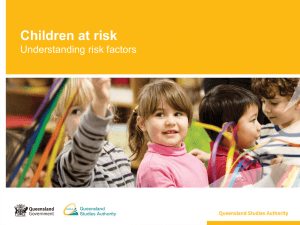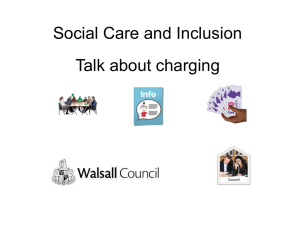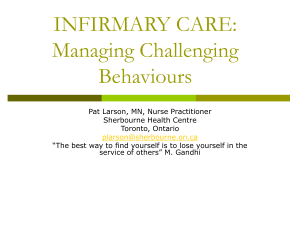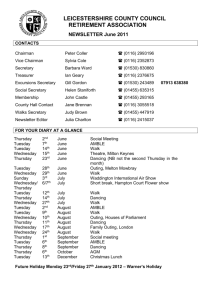the file - 2gether NHS Foundation Trust
advertisement
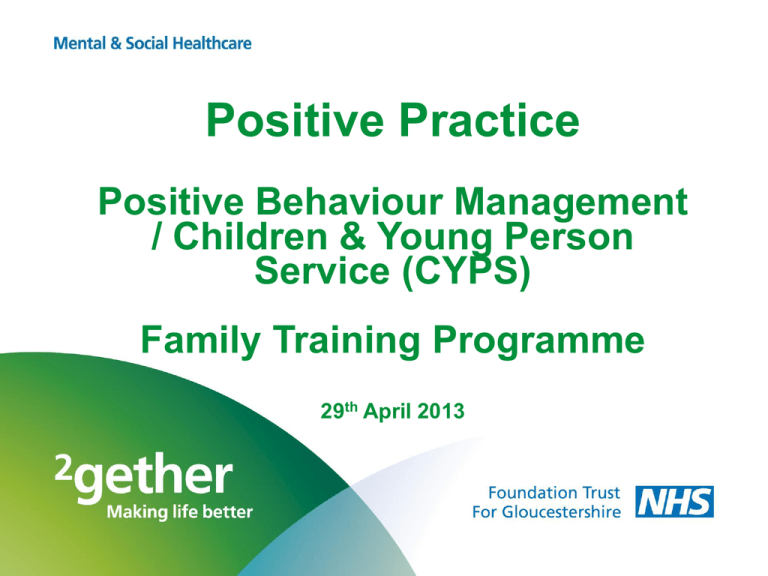
Positive Practice Positive Behaviour Management / Children & Young Person Service (CYPS) Family Training Programme 29th April 2013 Team Functions CYPS LD: Trust based team providing professional support and advice to families, carers and other professionals who support Children and Young people with complex needs, regarding a wide range of issues including physical and mental health, communication and behavioural problems PBM: Trust based team providing evidence based training and support to 2gft staff, other professionals, parents and carers of adults and young people with learning disabilities; and older adults with Dementia. Proactive focus on the prevention and safe management of “challenging behaviours” Positive Practice • Collaborative working between 2gft Positive Behaviour Management (PBM) & CYPS Learning Disability teams • Deliver effective, cost efficient extended programme of training for families and carers • Reduced risk to Young person and siblings • Provide family and carers with strategies for the prevention and safe management of challenging behaviours that may include physical aggression and self injurious behaviours • Reduce likelihood of family breakdown Rationale for Intervention CYPS – Typical Reason for Referral Rationale for Intervention • High rate of referrals that involve presentation of complex aggressive and Self Injurious Behaviours • Reducing the CYPS waiting list time • Limited appropriate training for family / carers available – where available not person focused • In the absence of training Families / carers report the use of untrained and potentially unsafe physical interventions to manage difficult behaviours, therefore potential safeguarding concerns. • Evidence based benefits of early behavioural intervention............................ Enduring Nature of Challenging Behaviour “….. 29 people (mean age 28 years) identified by service agencies as being the most challenging that had entered some form of institutional care (with an average age of 9.5 years); admission was often for the same challenging behaviours being displayed nearly two decades later” (Emerson et al, 1988) Programme Delivery • Identify young people from CYPS caseload who may be at most risk and whose families are struggling to manage more complex problem behaviours • Prevention (theory session) up to four families with similar needs are identified for half day theory training session Review behaviour support plan if already in place Individual behaviour audit to inform any practical training Practical training clinic Review Behavioural support plan Based on behavioural Audit - provide training in minimal number PBM self defence and physical intervention techniques Typical Techniques Most Prevalent techniques: •Assisted support (guiding) •Bites •Punches Outcomes to date • Positive feedback regarding how training is structured – found benefits from attending theory with other parents, however did not feel overwhelmed by practical due to limited and focused amount of appropriate techniques provided • Parents / Carers report feeling more confident in preventing and safe management of problem behaviours following the training • Heightened awareness of trigger factors for problem behaviours • Often reported that there is a limited use of physical interventions post training Continuing Positive Practice • On - going delivery of a programme of PBM training in collaboration with CYPS LD nursing team to families of young people with LD and ASC. This will incorporate refresher sessions for families / carers • Explore the development and the delivery of the programme; where appropriate to families of young people supported by the wider CYPS • Plans to publish the delivery of the programme and outcomes in Nursing Times in 2013


